Breaking stigmas
These smart-glasses or perhaps a better word for it, navigation glasses, are used by visually impaired people for echo-navigation in their daily lives instead of a walking-stick. The technical starting-point was a prototype with electronics placed in a thick plastic wearable frame placed in front of the eyes. Together with our client we decided that this setup would create a new stigma. For that reason we concluded to use normal, trendy wearing glasses as a starting-point for the design of this product and place the electronics around that.
Ergonomic Architecture
I personally love designing wearables as there is always a conflict between the consumer product trying to occupy the same space as the human body and in this case that was not different. The additional problem was that the product had to work with DIY-pcbs and electronics taking a lot of space so it was even more crucial figuring out a compact ergonomic shape considering as well that it had to fit in/around a prescription glasses archetype. The ergonomic study resulted in two alternative solutions: placing the electronics in the center of the frame or split up the electronics to both sides. As the centered solution would only enhance the stigma we decided to continue with the electronics-on-both-sides solution.

Electronics
The product uses different sensors to make it all work: a mini-LiDAR sensor to detect objects in the near distance, accelero-meters and gyroscopes and finally a sensor for measuring the ground-distance. The user, aided by earphones hears the echo-feedback from the sensors and feels additional direction information via two vibration-motors integrated in the arms of the glasses. The placement of the electronics was defined by an ergonomic research, in where we studied the most ideal position for the electronics considering the users head, (limited) field of vision and the orientation the electronics required for proper functioning.
 As this project was to be used for further exploration of the invention including a more realistic design as they had at the start of this project, we considered to use a seperate battery instead of integrating it in the frame as well. For that reason there is no foreseen space yet in the frame for a small lithium-ion battery. Secondly, we decided to use wired earphones but quite likely in future versions a wireless earphone is more likely, which is the reason we do not show (wired) earphones in the final renders you find below.
As this project was to be used for further exploration of the invention including a more realistic design as they had at the start of this project, we considered to use a seperate battery instead of integrating it in the frame as well. For that reason there is no foreseen space yet in the frame for a small lithium-ion battery. Secondly, we decided to use wired earphones but quite likely in future versions a wireless earphone is more likely, which is the reason we do not show (wired) earphones in the final renders you find below.This product is patented and we have consent to share this information. If you are interested in this project or have a similar project your company needs help with, please email us to know more.
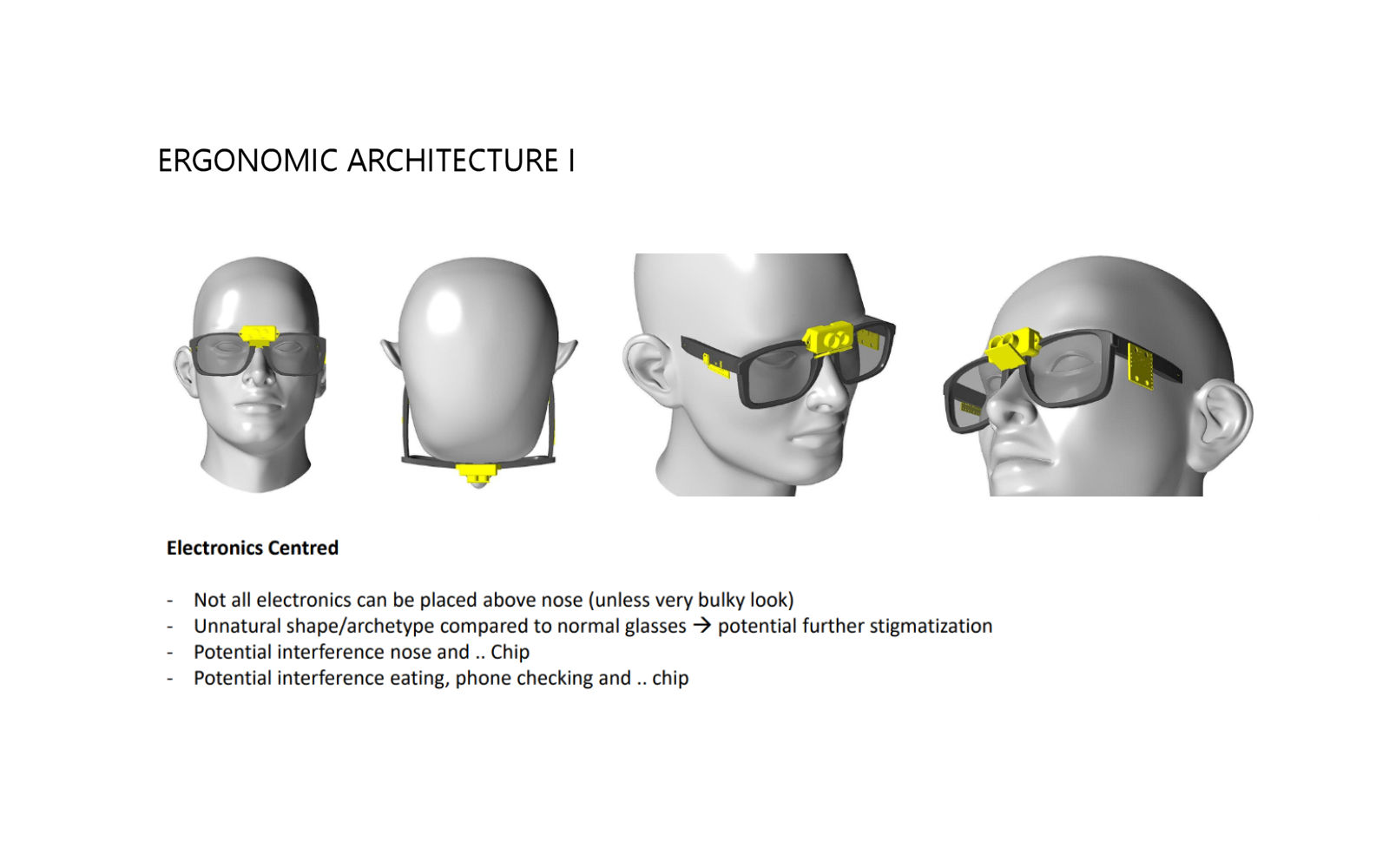
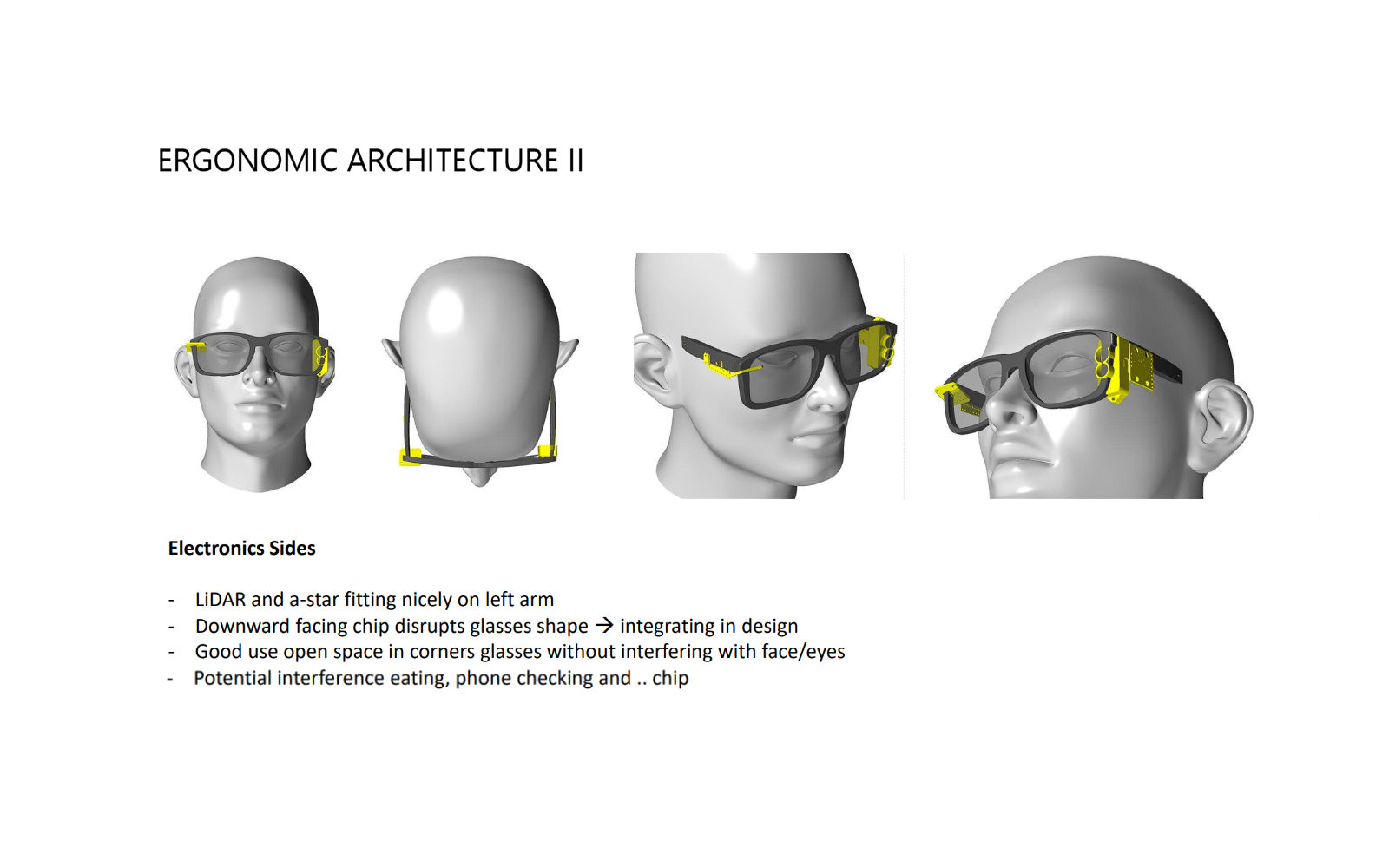
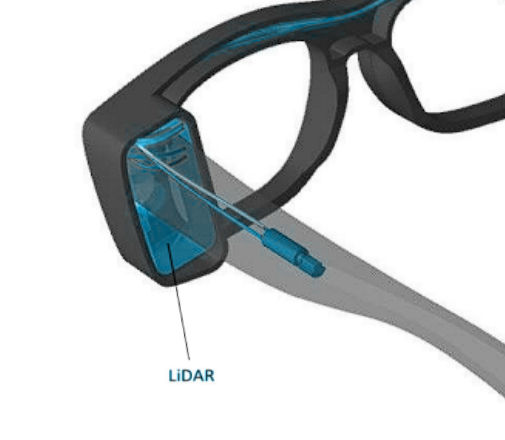
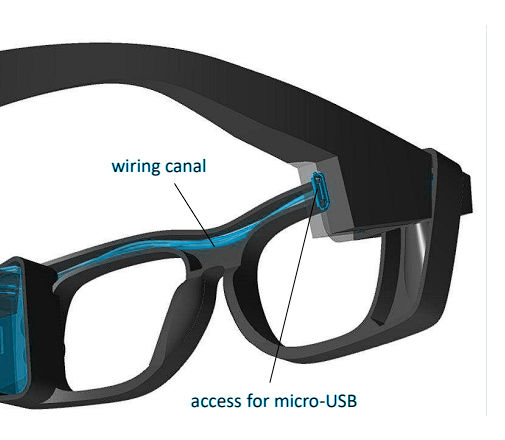
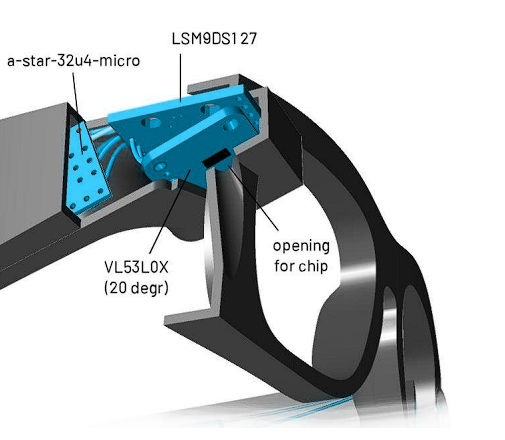

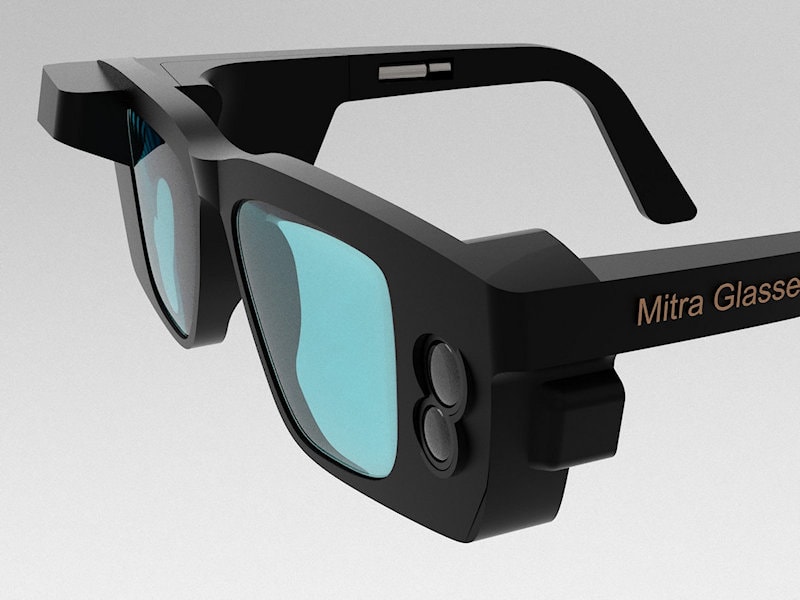
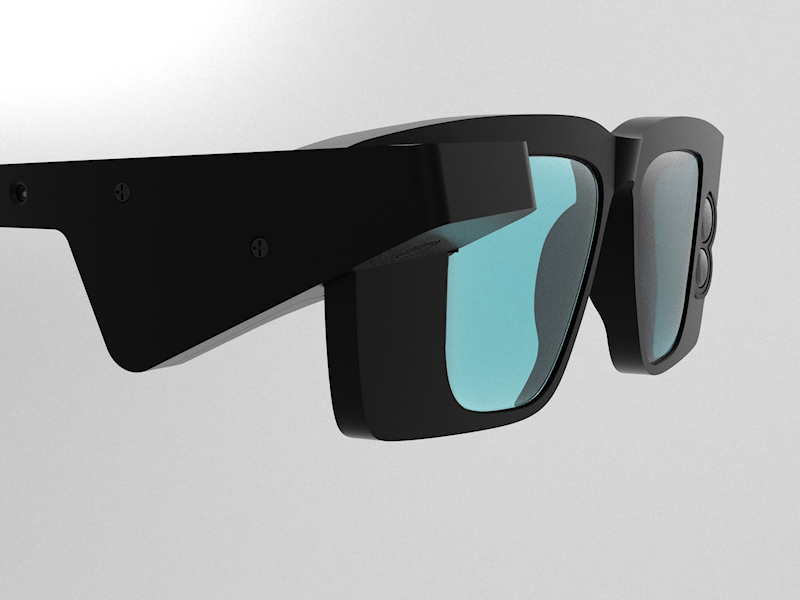
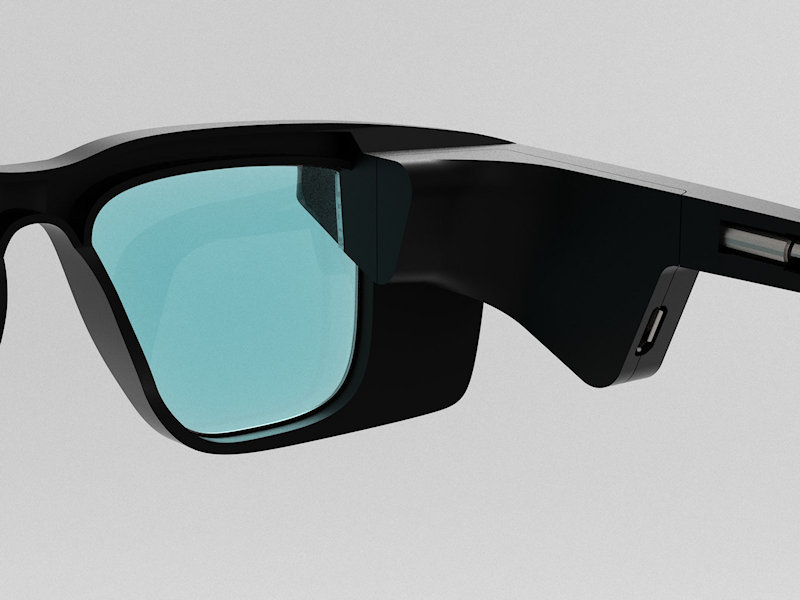
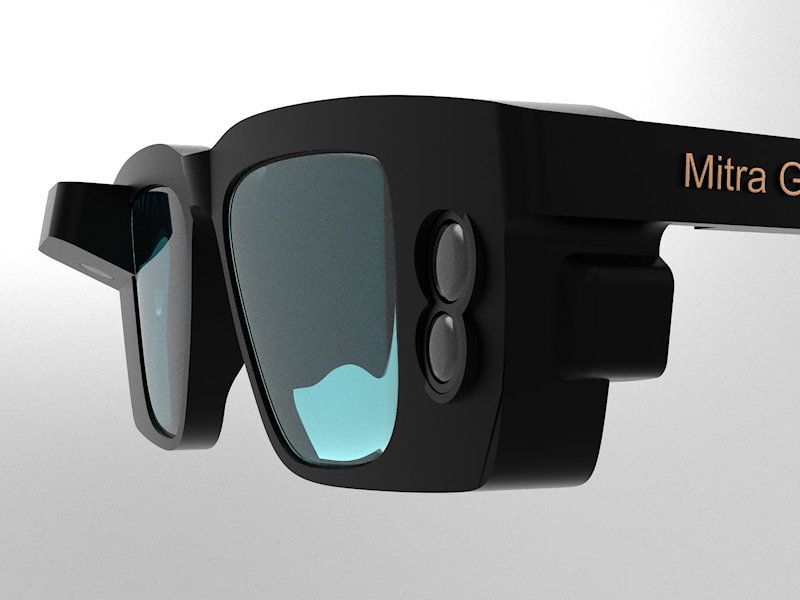
Want to know more?
Interested in this project or do you have a similar project your company needs help with? Please email us to know more. These Mitra Glasses are currently under development, want to know more about Mitra Glasses, follow this link.